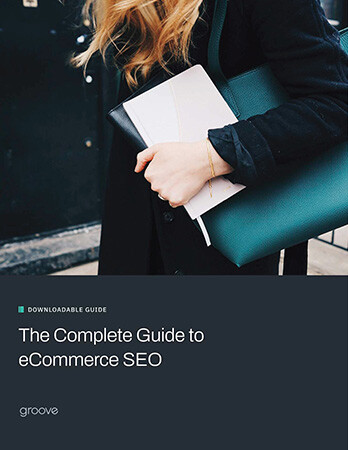It has been said that it's never a good idea to put all your eggs in one basket, and this sentiment certainly applies to e-commerce marketing. If you want to give yourself the best possible chance of attracting new customers and making your online store a success, you need to take a wide-ranging approach to e-commerce marketing that includes many different methods and strategies.
Search engine optimization, PPC advertising, and email/SMS promotion are three core pillars of e-commerce marketing that every online retailer should leverage. To help you get started, we'll go over what each of these methods entails and how an e-commerce marketing agency like Groove Commerce can help you integrate them into an all-inclusive marketing strategy.
Search Engine Optimization (SEO)
Search optimization is one of the most powerful tools for e-commerce stores. It allows you to attract organic traffic to your website without ongoing ad spending. However, achieving good SEO can be complicated and requires a variety of approaches.
To make your online shop more appealing to search engines like Google, you'll want to start by optimizing your web pages. For instance, you could ensure they work well on mobile devices and don’t contain any broken links. It’s also best to use targeted keywords in your web content and on-page SEO elements, such as title tags and meta descriptions.
From there, you can further optimize your website for search engines with strategies like link building and content marketing. Google and other search engines prioritize websites with plenty of valuable content, so starting a blog and publishing high-quality articles can help you attract a lot of traffic. Search engines also favor sites that gain links on other authoritative websites. You can improve your rankings by using strategies like guest blogging to put links on other sites. Learn how we used SEO to help boost revenue by 50 percent at a Seattle apparel company.

Pay-Per-Click Advertising (PPC)
Pay-per-click advertising allows you to create ads and only pay when someone actually clicks on them. These ads can offer a lot of value, but they could also easily end up costing you more than they deliver if you lack a well-optimized PPC strategy.
Platforms like Google Ads allow you to precisely target your ideal customer, and targeting is a big part of what makes PPC campaigns successful. Engaging, attention-getting ad copy is a key element as well, and you can use A/B testing to see which ad variations are most effective.
With Google Shopping advertisements and product listing ads (PLAs), you can achieve better ad placement and target e-commerce shoppers more effectively. Another great strategy to consider is PPC retargeting. This method involves showing ads to people who previously visited your website (or otherwise engaged with your brand) but did not complete a purchase. Customers often need to see a product multiple times before they’re ready to make buying decisions.
Email and SMS Marketing
Email and SMS marketing allow you to engage directly with your customer base. But first, you need to build email or SMS lists. This can be done in a variety of ways, but one tried-and-true approach is to collect email addresses by using a lead magnet (such as a discount code for your products).
Once you've built a list, you'll want to segment it for better targeting and more personalized communications. For example, you could segment your list based on the products that specific customers have purchased. This allows you to offer product recommendations that better match their interests.
In fact, personalization is the biggest key to email and SMS marketing success. When you leverage your customer data to target the right group with the right message at the right time, you're going to achieve a lot better results than a "one-size-fits-all" approach.
Integrating SEO, PPC, Email, and SMS
All four of these e-commerce marketing methods are effective on their own, but they become even more beneficial when you integrate them into a unified e-commerce marketing strategy.
This starts with ensuring that you have consistent messaging and branding across all of your promotional channels. It's also important to share data between channels so that the insights you gather from one can be used to improve the others.
You could also use different marketing channels to create an optimized customer journey. For example, you might employ SEO and PPC ads to attract potential customers to a landing page where you collect their email addresses. Next, you can use email marketing to nurture them toward a sale. Whatever your customer journey looks like, a powerful way to turn leads into paying customers is to map it out and integrate various channels into the process.
Measuring Success
There are a lot of different key performance indicators (KPIs) that you can use to measure the success of your marketing channels, like click-through and conversion rates for PPC ads or open and click rates for email campaigns. And there are a variety of tools that help you track these KPIs as well. Google Ads, for example, offers in-depth analytics that measure the performance of PPC campaigns. Email or SMS marketing software usually includes analytical tools as well.

Based on this data, you can find out where there is room for improvement and use A/B testing to continually optimize your e-commerce marketing strategy.
The Power of Integrated eCommerce Marketing Services
The best approach to e-commerce marketing is one that is all-inclusive and involves numerous marketing channels. At Groove Commerce, this is the kind of strategy that our e-commerce marketing agency helps clients develop.
If you would like to learn more about our industry-leading eCommerce marketing services and schedule a free website audit, feel free to contact us today!

eBook
The Complete Guide to eCommerce SEO
Explore tags:
About the author
Subscribe to the Groove Newsletter
Get the latest updates and insights straight to your inbox





